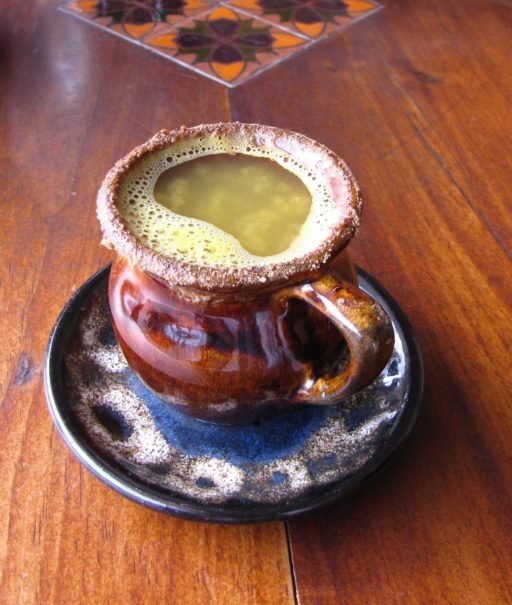
A Warming Drink for When Your Country Might Not Be Falling Apart

A Warming Drink for When Your Country Might Not Be Falling Apart
Canelazo in Bogotá
Back in October, after Colombians voted “no” to a historic peace deal that would have officially ended the longest-running conflict in the Western hemisphere, I felt like our country was beyond salvation. But the following week, I joined the thousands of “yes” and “no” voters who took to the streets to demand a solution. I had just moved back to Bogotá after three years living abroad, and the marches that flooded downtown took me back to Bolivar Square, the country’s center of political power, for the first time in many years.
People from all over the country joined the demonstrations, and some eventually decided to set up camp and stay in the square until a new deal was areached and approved. Seeing so many people coming together to rally for the rights of millions they didn’t know, I felt as if the country I thought was falling apart might have not been as divided as it seemed after all.
And in the square, I sensed a smell that instantly brought me back to Bogotá, to the memories of past political struggles and massive get-togethers. It was the smell of canelazo. This is a typical hot drink consumed in the parts of Colombia that we hyperbolically call “cold lands,” a staple of any mass gathering, political or not. It is made with aguapanela—basically unprocessed sugar (or panela) boiled in water, a favorite source of cheap energy for farmers around the country—, cinnamon (canela), lemon, and aguardiente—the national liquor made from sugar cane and anise.
Canelazo is used for energy, warmth, comfort and sometimes even to battle out a cold. It is common to see carts around Bolivar Square and other gathering points at night with big pots where the drink has been boiled. So, during those first marches after the peace vote, they were there, despite there being crowded by the demonstrators.
I couldn’t drink one then, but a few weeks afterwards I brought my friends who were visiting from the U.S. to see the square and the camp. There was a kiss-a-thon going on to promote a new peace deal and also LGBT rights. We bought canelazos from a guy with a cart who was looking on amusedly. He told us about his enhancement to the recipe (honey), and we kept going through the city with our drinks warming us and giving us a slight buzz. The place that just a few days earlier seemed to concentrate all of the country’s woes and frustrations now seemed hopeful.
In early December, Congress approved a modified peace deal, but the festive reactions many of us were hoping for since the peace talks became public four years ago didn’t materialize. There were no big demonstrations, no marches that flooded downtown like before. Our president now has a Nobel Peace Prize, and we now have a peace deal, but its approval seemed more like a technicality than a popular embracing of peace, which might undermine its validity. And we still have a long way to go. Many laws still have to be debated and implemented for the disarmament and demobilization of the largest organized violent group in the country to become real. And other groups still remain. But maybe soon we will be able to go back to the square and celebrate peace, actual peace, with a canelazo or two.